If you are an only child then you know all too well what swingball (more commonly known as tetherball in the US) meant for the 70s generation. It was something of a revolution in the outdoor games arena, meaning you no longer had to mingle with the bully kids who lived in your cul-de-sac, but could instead convince mum and dad you were getting some fresh air all on your own. You could even lure them into the false pretence that you were actually in training to become the next Wimbledon tennis championship. Little did they know back then that the swingball tennis star of the future would turn out to be Tim Henman.
Of course, if you were feeling particularly sociable, you could invite another person to partake in a swing of ball with you, too. After dad had had hammered the long metal pole (about 1.5m high) into the lawn (it was always at an angle), you could begin hitting the tennis ball, which was attached to the end of a a long string that wrapped round a metal spring at the top of the pole. This mechanism meant the length of string could whizz around and around the pole at quite some speed. The only no-nos in swingball play were stepping into your opponent's half of the pole area, and sneakily carrying the ball with your racket rather than striking it. The idea of playing against an opponent was to see who could get the string to go all the way down to the bottom of the coil or to the top (depending on which direction you were meant to be hitting the ball) by way of missed hits form your rival. And if, in the style of John McEnroe, you aced your opponent to victory, a flag would pop up on the top of the pole. No need for an umpire on the swingball court!
Swingball was brilliant if you weren't all that great at tennis - well, it certainly helped improve your hand to eye co-ordination when you have a hard ball coming straight for your nose! You could also always catch the ball on its second rotation if you weren't quite quick enough on the initial circuit. Maybe relying on this second chance ethos of swingball is the reason few of us actually ended up turning pro. That and the problems of playing with an older or younger sibling. Such extreme height differences made swingball all the more barbaric, leading to something many have termed 'diagonal play'.
Along with actual paddling pools (not old bath tubs or washing-up bowls), trampolines and climbing frames, swingball was predominantly the preserve of the middle classes. But this never stopped the poorer kids from fashioning their own swingball out of a washing line and an old broom - though you never could be sure the ball would stay attached in these situations. It's no doubt this kind of danger, plus the realisation among kids that you could play ball games from your living room on Pong for your Atari or later on your Sega that eventually led to the snubbing of swingball.

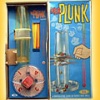


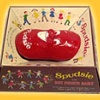
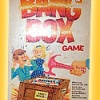
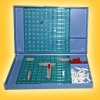
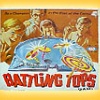
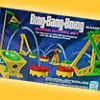
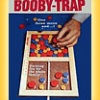
Do You Remember Swingball / Tetherball?
Do You Remember Swingball / Tetherball?